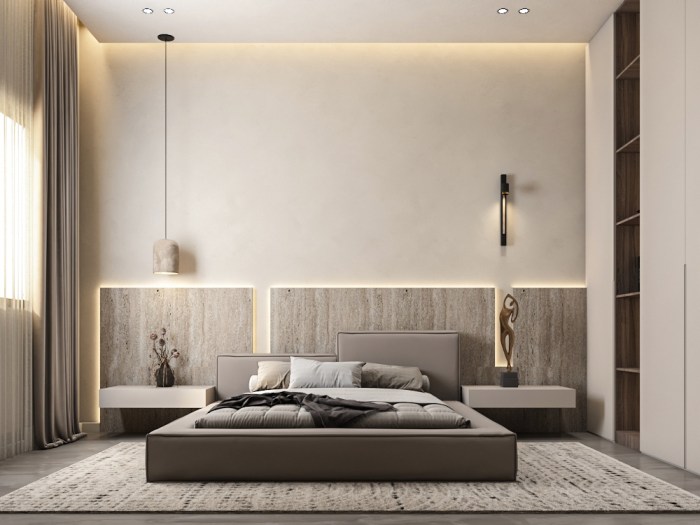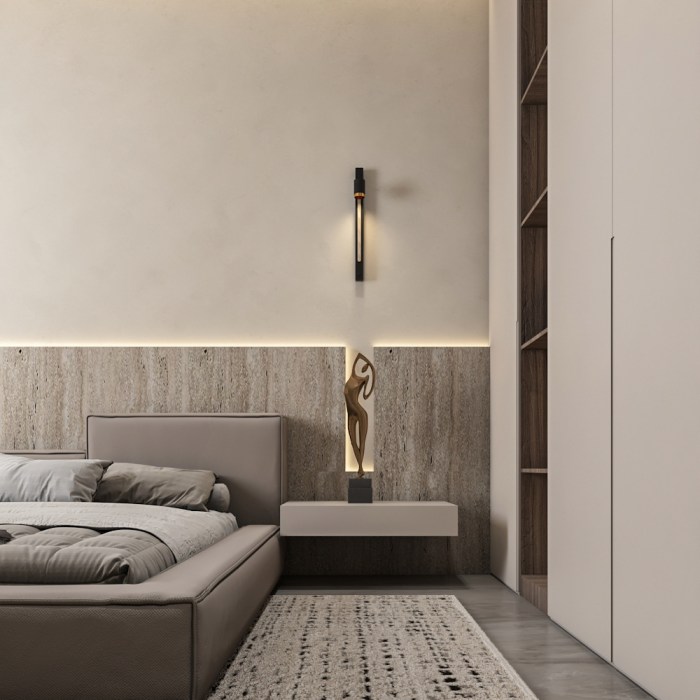Embark on a journey through the realm of interior design with a focus on the innovative concept of new room design. This introduction sets the stage for a captivating exploration of how the layout and aesthetics of a room can profoundly impact its ambiance and functionality, reflecting the unique style and personality of its inhabitants.
As we delve deeper into the key elements, current trends, budget-friendly tips, and sustainable practices in room design, prepare to be inspired and empowered to transform your living spaces into personalized sanctuaries of creativity and comfort.
Introduction to New Room Design
New room design refers to the process of creating a fresh layout, color scheme, and overall aesthetic for a living space. It plays a crucial role in interior decor as it can significantly impact the ambiance and functionality of a room.
A well-designed room can enhance the overall living experience by optimizing space, improving flow, and creating a cohesive and inviting atmosphere. It allows individuals to express their personal style and preferences through furniture choices, decor elements, and color palettes.
Elements of Room Design
When designing a new room, there are several key elements to consider to create a cohesive and functional space. Factors such as lighting, colors, furniture layout, and decor accessories play a crucial role in determining the overall aesthetic and functionality of the room.
Lighting
Proper lighting is essential in setting the mood and ambiance of a room. Natural light can make a space feel open and airy, while artificial lighting can be used to highlight specific areas or create a cozy atmosphere. The placement of light fixtures and the type of bulbs used can greatly impact the overall design of the room.
Colors
The choice of colors in a room can significantly affect the overall feel and style. Different colors can evoke different emotions and set the tone for the space. Warm colors like red and yellow can create a cozy and inviting atmosphere, while cool colors like blue and green can promote relaxation and calmness.
It's important to consider the color scheme and how different hues complement each other in the room.
Furniture Layout
The layout of furniture plays a vital role in the functionality of the room. It's essential to consider the flow of traffic, the purpose of the space, and the size of the furniture pieces when arranging them in the room.
The placement of furniture can also affect the balance and visual appeal of the room.
Decor Accessories
Decor accessories such as artwork, rugs, pillows, and plants can add personality and style to a room. These accessories can tie the design elements together and create a cohesive look. It's important to choose accessories that complement the overall theme of the room and enhance the aesthetic appeal.
Trends in Room Design
Room design trends are constantly evolving, influenced by various factors such as lifestyle changes, technological advancements, and cultural shifts. Designers and homeowners alike are always looking for new ways to create spaces that are not only aesthetically pleasing but also functional and reflective of personal style.
Let's explore some of the current trends shaping modern room design.
Minimalist Design
Minimalism continues to be a popular trend in room design, characterized by clean lines, simple color palettes, and a focus on functionality. The "less is more" approach appeals to those seeking a clutter-free and serene environment. Examples of minimalist color schemes include white, beige, and grey, while furniture styles often feature sleek and understated designs.
Bohemian Style
On the other end of the spectrum, bohemian design embraces a more eclectic and free-spirited aesthetic. This trend incorporates vibrant colors, layered textures, and a mix of patterns to create a cozy and inviting space. Popular bohemian color schemes include rich jewel tones, earthy neutrals, and bold prints, while furniture styles often feature vintage or globally-inspired pieces.
Scandinavian Influence
Scandinavian design has gained popularity for its emphasis on simplicity, functionality, and natural elements. This trend typically features light, neutral colors, organic materials, and minimalist decor. Popular color schemes in Scandinavian design include white, light wood tones, and soft pastels, while furniture styles often showcase clean lines and ergonomic designs.
Budget-Friendly Room Design Tips

Designing a new room on a budget doesn't have to mean sacrificing style or functionality. With a bit of creativity and resourcefulness, you can transform your space without breaking the bank. Here are some practical tips to help you achieve a stylish and budget-friendly room design.
DIY Ideas
DIY projects are a great way to add personal touches to your room design while saving money. Consider repurposing old furniture or accessories to give them a new life. You can also try your hand at creating custom artwork or decorative pieces to enhance the look of your room.
Upcycling Techniques
Upcycling old items is not only eco-friendly but also budget-friendly. Look for opportunities to repurpose items like mason jars, wooden crates, or old textiles to create unique decor elements for your room. With a little creativity, you can turn everyday objects into stylish and functional pieces for your space.
Affordable Decor Options
When it comes to decor, you don't have to spend a fortune to achieve a stylish look. Shop at thrift stores, garage sales, or online marketplaces to find affordable decor items that fit your style. You can also consider DIY decor projects using inexpensive materials like paper, fabric, or paint to add personality to your room without breaking the bank.
Sustainable Room Design Practices
When it comes to designing a new room, incorporating sustainable practices is not only environmentally friendly but also beneficial for creating a healthier living space. By using eco-friendly approaches, such as sustainable materials, energy-efficient lighting, and indoor plants, you can create a green and environmentally conscious room design that promotes well-being.
Importance of Sustainable Materials
Using sustainable materials, such as reclaimed wood, bamboo, cork, or recycled glass, can significantly reduce the environmental impact of your room design. These materials are renewable, non-toxic, and energy-efficient, making them a better choice for both the environment and your health.
Energy-Efficient Lighting
Opting for energy-efficient lighting, such as LED bulbs or compact fluorescent lamps (CFLs), can help reduce electricity consumption and lower your carbon footprint. Additionally, utilizing natural light through strategically placed windows or skylights can further enhance the energy efficiency of your room.
Indoor Plants for Air Quality
Indoor plants not only add a touch of nature to your room design but also help improve indoor air quality by absorbing pollutants and releasing oxygen. Consider incorporating air-purifying plants like spider plants, peace lilies, or snake plants to enhance the overall sustainability of your room.
Tips for Creating an Eco-Friendly Room Design
- Choose furniture made from sustainable materials or opt for second-hand pieces to reduce waste.
- Use non-toxic paint and finishes to minimize indoor air pollution.
- Invest in energy-efficient appliances to conserve electricity and reduce energy costs.
- Implement proper insulation to maintain a comfortable temperature without excessive energy consumption.
End of Discussion

In conclusion, the art of new room design is not merely about arranging furniture or selecting color schemes—it's a harmonious blend of creativity, functionality, and sustainability. By incorporating the discussed elements and embracing the latest trends in design, you can embark on a fulfilling journey of reinventing your living spaces with flair and finesse.
Essential FAQs
How important is lighting in new room design?
Lighting plays a crucial role in setting the mood and highlighting the design elements of a room. Proper lighting can enhance the ambiance and functionality of the space.
What are some popular color schemes in modern room design?
Popular color schemes include monochromatic, complementary colors, and analogous colors, each offering a unique aesthetic appeal to the room.
How can one incorporate sustainable practices into room design?
By using eco-friendly materials, energy-efficient lighting, and integrating indoor plants, one can create a sustainable and environmentally conscious room design.
